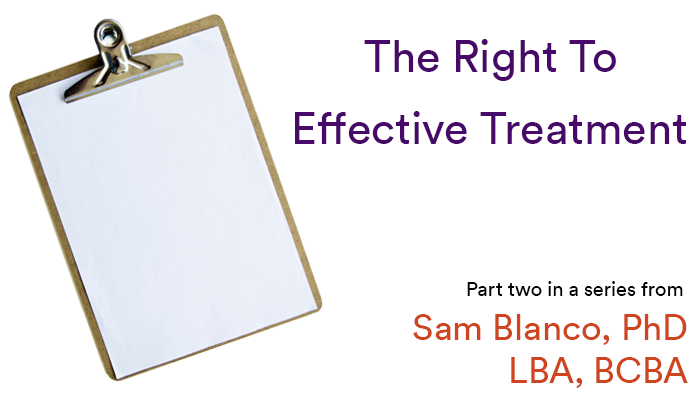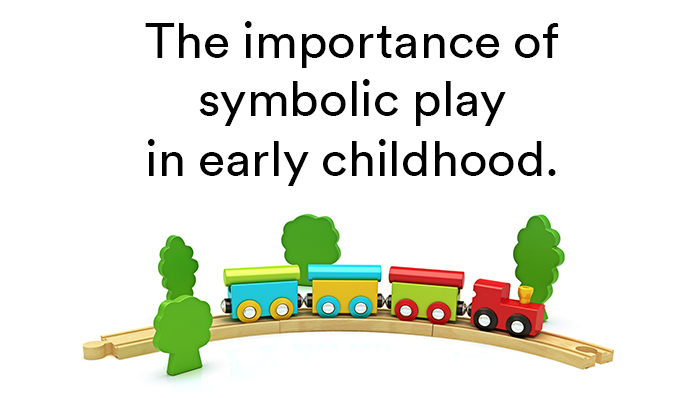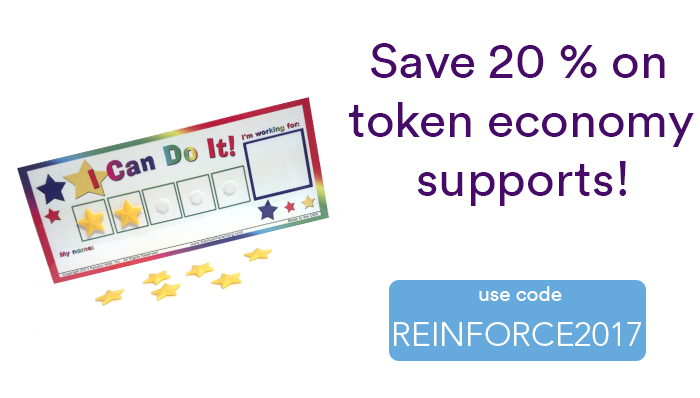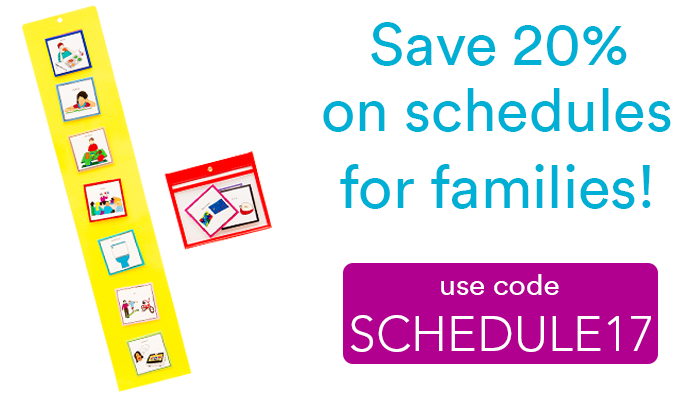Category Archives: autistic spectrum disorder
Pick of the Week: Token Economies!
We have great tools to help learners meet goals and stay on task! Sale ends 11/6!
*Promotion is valid until November 6th, 2017 at 11:59pm ET. Offer cannot be applied to previous purchases, combined with any other offers, transferred, refunded, or redeemed and/or exchanged for cash or credit. Different Roads to Learning reserves the right to change or cancel this promotion at any time. To redeem offer at difflearn.com, enter promo code REINFORCE2017 at checkout.
10 Common Mistakes Parents Make In Playing With Their Children With ASD
This week’s post comes to us from Stephanny Freeman, PhD and Kristen Hayashida, MEd, BCBA, and Dr. Tanya Paparella, our partners on the Play Idea Cards app. Play Idea Cards is a full curriculum on teaching play – right in the palm of your hand! Check it out on the Apple App Store!
Parents of young children with developmental disabilities are truly tireless. At times when one would think a break could be had – the time when they get to enjoy watching their children play, enjoy a conversation with another adult while their children play, or even relaxing by playing and having fun with their children – instead they are working with and teaching their children…and rightly so!
I’ve spent a good part of my career watching parents play with their young children with a variety of developmental disabilities (severe intellectual delay, Down syndrome, and autism spectrum disorder). Across the board, parents are remarkable. In a beautiful coordination of grace and direction, they work on controlling behavior, developing language, teaching concepts, maintaining attention, and building fun and relationships. Parents of children with disabilities are more directive and more instructional – yielding evidence of tremendous benefits for their children’s development as a result of these tireless warriors.
Children with autism in particular, have a significant and very specialized deficit in their ability to play with toys. Sometimes it can be in the functional domain but it is always difficult for them to think symbolically and abstractly about play. Teaching play to children with ASD is incredibly important and parents know this – they try!
For parents of children with ASD, here are 10 mistakes that are commonly made during play that can really disrupt their child’s growth in play.
1. Thinking that play develops on its own and randomly. Play in neurotypical children develops generally in a sequence and children with ASD do not naturally follow or progress through that sequence. Most books you find on children’s play show a fairly consistent developmental pathway for play. Skills build upon skills. Children start with very functional and constructional acts and develop into symbolic and creative play.
2. Forgetting to use play to actually teach play. Parents often use play to teach other skills (e.g. language or early concepts). Children with ASD have a core deficit in play so take time during your play with your child to actually teach them how to play with the toys regularly.
3. Thinking that your child will love play right away. For children with ASD, symbolic play is very difficult and likely your child would rather do other things than play. For example, a child with ASD may rather roll a car down a ramp repetitively then have the car “feel hungry” and go to the gas station for some “food.” It actually falls on the parent, at first, to convince the child that play is fun! This means you must have high positive affect (e.g., show excitement in your body language and in your words), work through difficulties with a huge smile, and laugh and enjoy using positive language.
4. Playing at a level that is way too difficult. Knowing what your child can do will help you teach them what comes next. If you child is just starting to put puzzles together, asking them to pretend to be Buzz Lightyear and talk like him is much too difficult.
5. Forgetting to imitate. It is critical for engagement building to imitate your child’s appropriate play behavior. Directiveness is still great but integrate imitation in your play. You should have a good balance of both. If your child is building blocks, grab a few and copy your child.
6. Constantly shifting your child’s attention. Sometimes it is necessary to move your child away from something that is a perseveration or a repetitive interest but in general, try to stick with what your child is doing. Sustained engagement with toys and people in coordination is a great skill and something children with ASD need to work on. It’s not a race to see how many different things you can do during a play time. Be patient and tolerant and build off of their interests rather than shifting their attention. Enjoy playing similar routines every time you play – just slowly build off of them.
7. Prompting intrusively. Starting off by hand-over-hand prompting or being very verbally directive (“put that block here and the train here”) your child is forced to shifts their attention without their own consideration. Instead, focus on what they pick up or are interested in, then move them forward by showing them something related to what they are doing, or general verbal comments (“Boy, that doll is super hungry!” as your child is holding a piece of play food).
8. Being concrete. If your child wants to do something a little imaginative, don’t bring them back to the concrete. If a child grabs a block and starts to eat it like a burger, please don’t tell them “It’s not food it’s a block!” Instead, imitate and say, “You have a burger, I have a hot dog!”
9. Missing the surprise factor. Every play session, even if it’s pretty routine and organized, should include something surprising by the parent. Parents should throw in a fun “wrench” and make a huge facial expression that indicates surprise. It’s called “violating” a routine or a play scheme. So if Mickey Mouse always goes to his top bunk in the play house, make sure one day the top bunk has cats in it! Your child will laugh and you can laugh too. This makes for enjoyment and further eye contact and engagement. It also facilitates problems solving.
10. Allowing your child to get away from play. Although the prior points suggest to following your child’s lead and imitate, the line should be drawn when your child doesn’t follow through with play. So if you are playing with your child’s interest (e.g. play food) and you make the suggestion of showing him dolls or plates or cups, then you verbally request his participation, he must follow through. Don’t allow your child to not follow through on play. Remember it’s a core problem for them so it’s hard!
Although play is still a “work” time for parents, hopefully these tips will help make it smoother and more enjoyable for everyone. This builds interest, sustained engagement, longer schemes and ideas for play, and positive practice of play skills. Ready Set PLAY!
About The Authors
Dr. Stephanny Freeman is a clinical professor at UCLA, a licensed clinical psychologist, and Co-Directs the Early Childhood Partial Hospitalization Program (ECPHP). For 20 years, she has educated children with ASD and other exceptionalities as a teacher, studied interventions for social emotional development, and designed curriculum and behavior plans in school and clinic settings.
Kristen Hayashida is a Board Certified Behavior Analyst at the UCLA Early Childhood Partial Hospitalization Program (ECPHP). For the last 10 years she has served as a therapist, researcher and educator of children and families living with autism spectrum disorder through the treatment of problem behavior.
Dr. Tanya Paparella is a specialist in the field of autism having spent more than 20 years in intervention and research in autism. She is an Associate Clinical Professor in the Division of Child Psychiatry at UCLA, a licensed clinical psychologist, and Co-Director of UCLA’s Early Childhood Partial Hospitalization Program (ECPHP), an internationally recognized model treatment program for young children on the autism spectrum.
Sam’s Hints for the Holidays: 6 Tips for Success on Halloween
Holidays can be challenging for everyone in the family. Your to-do lists get longer, your routines are switched around, and all the little stresses can be especially difficult for your child with autism. Here are a few tips to ease the difficulties related to Halloween.
For Preschool & Elementary Children
- Practice – Invite your neighbors to have a “rehearsal” for Halloween so your learner can practice the steps. If this isn’t a possibility for you, it may be helpful to watch youtube videos of trick-or-treating.
- Prepare – Let your child know the trick-or-treating route in advance. In the days leading up to Halloween, make yourself aware of houses to avoid based on decorations that are gory, include excessive lighting, have strobes, or any other aspects that you know will make your learner uncomfortable.
For Teenagers
- Consider alternatives – You may want to join with other parents to throw a Halloween party that is autism-friendly based on the needs of your learner and the needs of other party guests. Another suggestion would be to celebrate with a themed activity, such as Halloween activities at local museums or art institutions.
- Give a task – Let your child have a job such as giving out the treats at the door, managing an activity for younger children, or helping with decorating your home.
For All Children
- Be flexible – Think about what is necessary for your learner, what your learner is interested in, and what success looks like in terms of Halloween. Maybe success means you visit three houses, or maybe success means your learner chose a costume. The idea is to keep it fun.
- Remember it’s okay to stay at home! – You can create your own Halloween tradition that fits your family’s needs. This could include a special movie night, creating Halloween-inspired foods together, or anything that is fun for the whole family.
WRITTEN BY SAM BLANCO, PhD, LBA, BCBA
Sam is an ABA provider for students ages 3-15 in NYC. Working in education for twelve years with students with Autism Spectrum Disorders and other developmental delays, Sam utilizes strategies for achieving a multitude of academic, behavior, and social goals. She is also an assistant professor in the ABA program at The Sage Colleges.
Ethics Part Two: More on the Right to Effective Treatment
This is part two in a series on ethics and effective treatment. Part one can be found here.

In Part One, I discussed the right to effective treatment as detailed by the Professional and Ethical Compliance Code for Behavior Analysts. An essential part of effective treatment is providing, as the code specifies, “scientifically supported, most-effective treatment procedures” (BACB, 2014). In order to do this, behavior analysts must contact the research literature to fully understand scientifically supported treatments. They should do this through reading journal articles, but also through attending workshops, trainings, and local conferences.
Reading journal articles should be a regular activity for behavior analysts. It is suggested that behavior analysts set aside two to four hours per week to read recent journals (Bailey & Burch, 2016, p. 24). This may seem like a lot of time, especially if you aren’t currently doing it. But this practice allows you to stay abreast of current research and have access to a broader range of possible interventions. You may also find it easier to follow through if you participate in a journal club (click here to see suggestions for that.).
Most of the behavior analytic research you’ll find is comprised of single-subject studies. You may get pushback from professionals or parents who are accustomed to seeing research with very large numbers of participants and an explanation of average results. It’s important to understand how to address those concerns in an accessible and accurate way. Here are some things to consider:
• Behavior analytic research does not utilize averages. Therefore, we learn a lot about the specific individuals who responded to an intervention, and can make a more accurate hypothesis about whether or not that intervention will work for a particular client. Furthermore, research based on averages doesn’t provide any information on the percentage of individuals who did not respond to the intervention and WHY they did not respond to the intervention. This is important information that we’re missing out on!
• Behavior analysis is focused on creating individualized interventions. We do not believe in a one-size-fits-all approach, but rather in a set of principles of behavior. Individualizing treatment means that we are looking at the environment, the basic characteristics of the individual, the motivations of the individual, and the functions of a behavior when creating an intervention. When you familiarize yourself with behavior analytic research, you are able to identify interventions that worked with individuals who similar characteristics to that of your particular client.
• Though behavior analysts utilize single subject research, we are fully aware that this does not mean an intervention that worked for a few subjects will work for everyone. This is why there is an important stress on replication of research. (Chiesa, 1994). This is also why it’s important to read several journal articles on the same subject, rather than simply reading one and considering yourself up to date.
The main takeaway here is that being familiar with the research is important in order to maintain an ethical practice. Supervisors should support this by providing suggestions for readings and modeling these behaviors. Organizations can support this by subscribing to journals and maintaining a small library for employees. You can support it by subscribing to journals, setting aside time to spend time reading journals, and participating in a journal club. It is incredibly important to our field, and to your practice.
Bailey, J. S., & Burch, M. R. (2016). Ethics for behavior analysts: 3rd edition. New York: Routledge.
Behavior Analyst Certification Board. (2014). Professional and ethical compliance code for behavior analysts.
Chiesa, M. (1994). Radical behaviorism: The philosophy and the science. Authors Cooperative.
WRITTEN BY SAM BLANCO, PhD, LBA, BCBA
Sam is an ABA provider for students ages 3-15 in NYC. Working in education for twelve years with students with Autism Spectrum Disorders and other developmental delays, Sam utilizes strategies for achieving a multitude of academic, behavior, and social goals. She is also an assistant professor in the ABA program at The Sage Colleges.
Pick of the Week: Verb and Action Cards!
Ready, set, GO! Save on some of our favorite cards to teach actions with code VERBS2017 at checkout!
*Promotion is valid until October 9th, 2017 at 11:59pm ET. Offer cannot be applied to previous purchases, combined with any other offers, transferred, refunded, or redeemed and/or exchanged for cash or credit. Different Roads to Learning reserves the right to change or cancel this promotion at any time. To redeem offer at difflearn.com, enter promo code VERBS2017 at checkout.
Pick of the Week: Math and Money!
This week only, save 20% on our favorite tools to teach young learners about math and money! Use code NUMBERS17 at checkout!
*Promotion is valid until August 25th, 2017 at 11:59pm ET. Offer cannot be applied to previous purchases, combined with any other offers, transferred, refunded, or redeemed and/or exchanged for cash or credit. Different Roads to Learning reserves the right to change or cancel this promotion at any time. To redeem offer at difflearn.com, enter promo code NUMBERS17 at checkout.
Building Variability Into The Routine
Several years ago, I was working with a 6-year-old boy we’ll call Terrence. Terrence was diagnosed with autism. He was a very playful child who was generally good-tempered, enjoyed playing with trains and watching TV, and posed few difficult behavior issues for his parents…until the day there was construction on their walk from the grocery store to their apartment and they decided to take a different route home. What happened next is what most people would call a full-blown meltdown: Terrence dropped to the ground, screaming and crying, and refused to move.
Many of the parents I work with have a similar story when it comes to their child with autism and an unexpected change in the routine. The change varies: the favorite flavor of fruit snacks is out of stock at the store or the babysitter greeted the child at the bus instead of the parent or they grew out of the coat they wore the past two winters… In fact, it can be difficult to anticipate exactly what specific routine may be a trigger for your learner. This is precisely why building variability into the routine can be helpful.
Here are a few things to consider:
First, think about the routines that are the most likely to be interrupted. Make a list of these so you can begin thinking about how to address those issues.
Second, work with your team (whether that means family or practitioners that work with your learner) to select 2-3 routines to focus on first.
Discuss how those routines would most likely be interrupted. For instance, a favorite TV show may be interrupted during election season or you may have a family function when the TV show is aired. In teaching your learner to be flexible with changes in routine, you will contrive changes that are likely to occur to give your learner quality practice.
Plan to vary the routine. Essentially, you are setting up the change in routine, but you will be prepared in advance to help your learner behave appropriately. (You’re much more likely to experience some success in this scenario than you would be if a change in routine occurs unexpectedly and/or last minute.)
Give your learner a vocabulary for what is happening. I teach many of my students the term “flexible.” I might say, “I appreciate how you’re being flexible right now” or “Sometimes when plans change we have to be flexible. This means…”
Reinforce appropriate behaviors related to flexibility! You want to be clear when they’ve made an appropriate, flexible response. In the planning phase, you can discuss what appropriate reinforcers might be for the routines you are targeting.
If you build in variations in routine and teach your learner some strategies for being flexible, you and your learner are much more likely to be successful in navigating unexpected changes.
WRITTEN BY SAM BLANCO, PhD, LBA, BCBA
Sam is an ABA provider for students ages 3-15 in NYC. Working in education for twelve years with students with Autism Spectrum Disorders and other developmental delays, Sam utilizes strategies for achieving a multitude of academic, behavior, and social goals. She is also an assistant professor in the ABA program at The Sage Colleges.
Pick of the Week: Family Schedules!
Stay on track at school AND at home with these terrific schedules and calendars!
*Promotion is valid until September 18th, 2017 at 11:59pm ET. Offer cannot be applied to previous purchases, combined with any other offers, transferred, refunded, or redeemed and/or exchanged for cash or credit. Different Roads to Learning reserves the right to change or cancel this promotion at any time. To redeem offer at differentroads.com, enter promo code SCHEDULE17 at checkout.
Go Play! The Importance of Symbolic Play in Early Childhood
This week’s post comes to us from Stephanny Freeman, PhD and Kristen Hayashida, MEd, BCBA, and Dr. Tanya Paparella, our partners on the Play Idea Cards app. Play Idea Cards is a full curriculum on teaching play – right in the palm of your hand! Check it out on the Apple App Store!

Most adults think of toy play as a natural part of childhood. When my daughter was born, we were showered with plush animals, tea sets, and dress up clothes for her to use in play. But what happens when the child does not find toy play to be natural?
Many children on the autism spectrum use toys non-functionally or repetitively. When I ask parents of children with ASD to tell me about their child’s play they often say “he doesn’t know how to use toys appropriately!” They then tell me about how the child may spin the wheels on the car while staring at the rotating objects. They tell me about the specific scripts the child uses to carry out a routine with their toys and subsequent tantrums if the routine is disrupted. Parents notice how this deficit in play impacts their ability to engage with peers or occupy their free time appropriately.
Symbolic play occurs when the child uses objects or actions to represent other objects or actions. For example, a child using a doll as their baby and rocking the doll to sleep is an act of symbolic play. The doll is not alive, but the child is representing a baby. This skill is a core deficit in children with ASD. This means that they do not “naturally” or “easily” acquire the ability to use toys to represent other things. Development of symbolic play is crucial in early development and is tied to numerous subsequent skills:
Language: symbolic play is highly correlated to language development. This means that the better the child’s ability to play representationally, the better the child’s language skills. There is also emerging evidence to support symbolic play as having a causal relationship to language. [Explanation].
Social Development: as neurotypical children continue their learning about symbolic play and through symbolic play, children with ASD often struggle to relate to their peers and understand their play schemes. Some children with ASD may only engage peers in physical play (instead of symbolic play) or they may end up playing alone using their familiar play scripts.
Perspective-taking: symbolic play allows the child early opportunities to take on the perspective of another being. If a child pretends to be a pirate, they being to talk and think of things a pirate might want/do. This early practice with perspective-taking allows the child to use this skill when interacting with peers and adults.
Meta-cognition and Problem Solving Skills: meta-cognition is the ability to think about one’s own thinking. This is an essential skill when solving problems and planning one’s time. During play kids plan, organize and cognitively process through obstacles and mishaps with their toys.
Emotional Development: through symbolic play, children can practice expressing emotion through the scenes they create. There is also some evidence suggesting that this early practice contributes to emotion understanding and empathy.
Clearly, children need play for growth and development. However, for children with ASD the development of symbolic play may be difficult and, even thought of as WORK!
Given the numerous skills that come out of symbolic play, we urge parents of children with ASD to consider the importance of toy play. Dedicate time and effort to engage your child in symbolic play. It is usually not easy at first! It might have been decades since you picked up an action figure and used him to fight off bad guys, but practice with your child.
Parents know that it is part of their job to help their child learn to read and do basic math. They would not let their child escape those tasks because they are hard. Please consider PLAY to be just as important and necessary for the child’s development. Even if it is work at first, insist the child play with you and in time, improvements may come not only in toy play but also in so many other key areas of development.
Jarrold, C., Boucher, J., & Smith, P. (1993). Symbolic play in autism: A review. Journal of
Autism and Developmental Disorders, 23(2), 281-307.
Ungerer, J.A. & Sigman, M. (1981). Symbolic play and language comprehension in autistic
children. Journal of the American Academy of Child Psychiatry, 20, 318-337.
About The Authors
Dr. Stephanny Freeman is a clinical professor at UCLA, a licensed clinical psychologist, and Co-Directs the Early Childhood Partial Hospitalization Program (ECPHP). For 20 years, she has educated children with ASD and other exceptionalities as a teacher, studied interventions for social emotional development, and designed curriculum and behavior plans in school and clinic settings.
Kristen Hayashida is a Board Certified Behavior Analyst at the UCLA Early Childhood Partial Hospitalization Program (ECPHP). For the last 10 years she has served as a therapist, researcher and educator of children and families living with autism spectrum disorder through the treatment of problem behavior.
Dr. Tanya Paparella is a specialist in the field of autism having spent more than 20 years in intervention and research in autism. She is an Associate Clinical Professor in the Division of Child Psychiatry at UCLA, a licensed clinical psychologist, and Co-Director of UCLA’s Early Childhood Partial Hospitalization Program (ECPHP), an internationally recognized model treatment program for young children on the autism spectrum.






